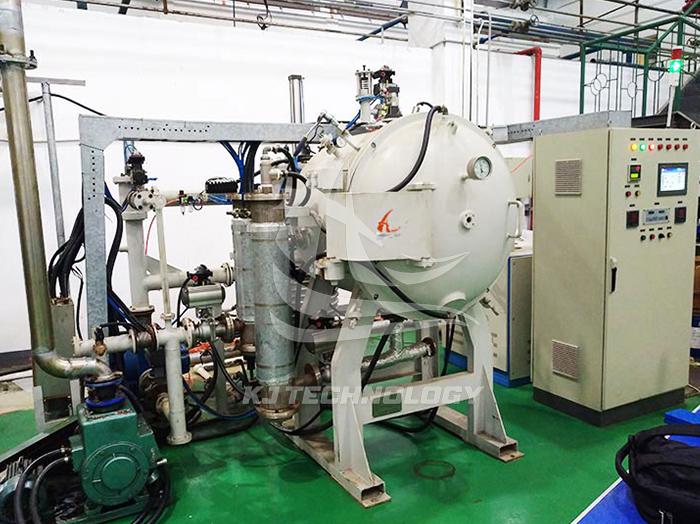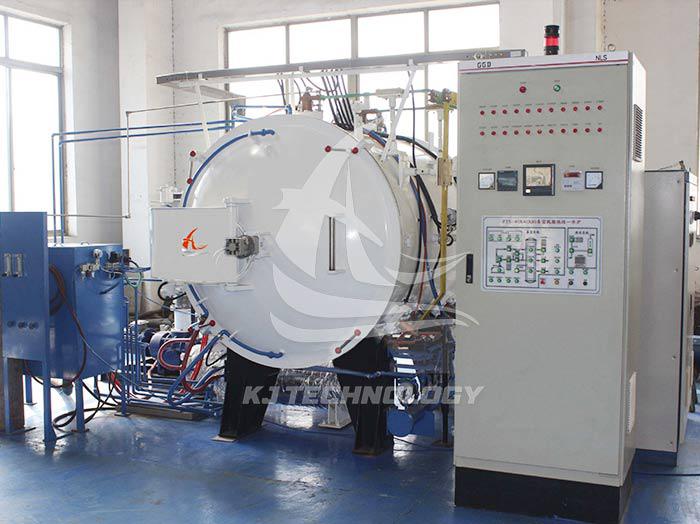What are the applications of vacuum sintering furnaces in the ceramic industry?
 03-20-2025 Author: KJ technology
03-20-2025 Author: KJ technology
Vacuum sintering furnaces are widely used in the ceramic industry, and the following are specific application scenarios and advantages:
Application scenarios
Preparation of ceramic materials:
Vacuum sintering furnace can be used to prepare various ceramic materials, such as fine ceramic components such as aluminum nitride, silicon nitride, aluminum oxide, zirconia, etc. Through vacuum sintering, rapid sintering and densification of ceramic powders can be achieved, improving the mechanical properties and thermal stability of ceramic materials.
Production of ceramic tiles and ceramics:
In the sintering process of ceramic products, vacuum sintering furnaces are widely used in the production of ceramic tiles, ceramics and other products. By controlling the temperature, atmosphere, and pressure during the sintering process, ceramic products with excellent physical properties and surface quality can be obtained.
Manufacturing of refractory materials:
Refractory materials are an important component of the ceramic industry, and vacuum sintering furnaces can be used to prepare high-performance refractory materials. By vacuum sintering, the density and strength of refractory materials can be increased, and their thermal shock resistance and corrosion resistance can be improved.
Preparation of optical functional ceramics:
Vacuum sintering technology plays an important role in the preparation of optical functional ceramics. For example, high transparency yttrium aluminum garnet (YAG) ceramics can be prepared using vacuum sintering technology, which has a wide range of applications in laser technology.
Advantage
Improve the density of ceramic materials:
In a vacuum environment, the pores and gases inside ceramic materials can be effectively eliminated, thereby promoting tight bonding between ceramic particles and improving the density and mechanical properties of ceramic materials.
Improving the microstructure of ceramic materials:
Vacuum sintering can promote atomic diffusion and rearrangement inside ceramic materials, helping to form a more uniform and detailed microstructure, thereby improving the physical properties and chemical stability of ceramic materials.
Control the atmosphere during the sintering process:
The vacuum sintering furnace can precisely control the atmosphere inside the furnace during the sintering process, avoiding reactions between ceramic materials and impurities such as oxygen, thereby ensuring the purity and performance of ceramic materials.
Improve production efficiency:
Vacuum sintering furnaces usually have high automation functions, which can achieve automated operations and data recording, and improve production efficiency. Meanwhile, due to the fast heating and cooling rates during the vacuum sintering process, the production cycle can be shortened and production costs can be reduced.
Environmental protection and energy conservation:
Compared with traditional sintering processes, vacuum sintering furnaces have lower energy consumption during the sintering process and do not require the use of protective or reducing gases, reducing gas consumption and emissions and meeting the requirements of environmental protection and energy conservation.
In summary, vacuum sintering furnaces are widely used in the ceramic industry and have significant advantages. With the continuous development of ceramic materials science, the application prospects of vacuum sintering furnaces in the ceramic industry will be even broader.








